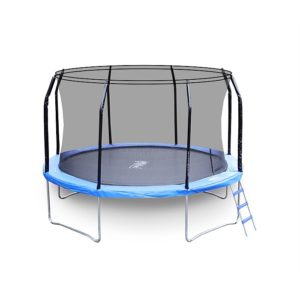As summer approaches, many families with children will buy a trampoline or bring one out from winter storage so the kids and their friends – and maybe even parents – can bounce to their hearts’ delight.
But while they are fun, they can also be dangerous, with 100,000 Americans seeking emergency-room treatment for trampoline-related injuries a year, according to the U. S. Consumer Product Safety Commission (CPSC).
This means you have a potential liability should a guest be injured playing on a trampoline. If your child’s friend is injured and you were not supervising their play, you run the risk of being targeted in a negligence lawsuit.
Even if you have barred the kids from playing on the trampoline without adult supervision and they break the rules, you can still be held liable should your child’s friend injure themselves.
If you are in the market for a trampoline or have one already, you need to have strict safety rules in place to protect your family members and any guests that use your trampoline.
If you do decide to get one, pay close attention to the following safety recommendations from the CPSC Trampoline Safety Alert.
 Preventing trampoline injuries
Preventing trampoline injuries
- Make sure that only one person is on the trampoline at a time.
- Make sure that no one is attempting somersaults. A bad landing leading to a back or neck injury can cause paralysis.
- Use shock-absorbing pads to cover the springs and frame.
- Make sure the trampoline is placed away from trees or nearby structures.
- Never allow anyone under the age of six to use the trampoline.
- Make sure children using the trampoline are supervised by a responsible adult.
- Add an enclosure specifically designed for trampolines, to help avoid people falling off.
Source: U. S. Consumer Product Safety Commission
Leading causes of trampoline injury
- Colliding with another person on the trampoline
- Landing improperly while jumping or doing stunts
- Falling or jumping off the trampoline
- Falling on the trampoline springs or frame
Insurance
While your homeowner’s policy could cover the cost of a claim, the policy limits may not cover all the damages that you could incur if the injury is a severe one.
If you have not already done so, you should seriously consider getting an umbrella policy that pays out once you’ve breached the limits of your homeowner’s insurance.










